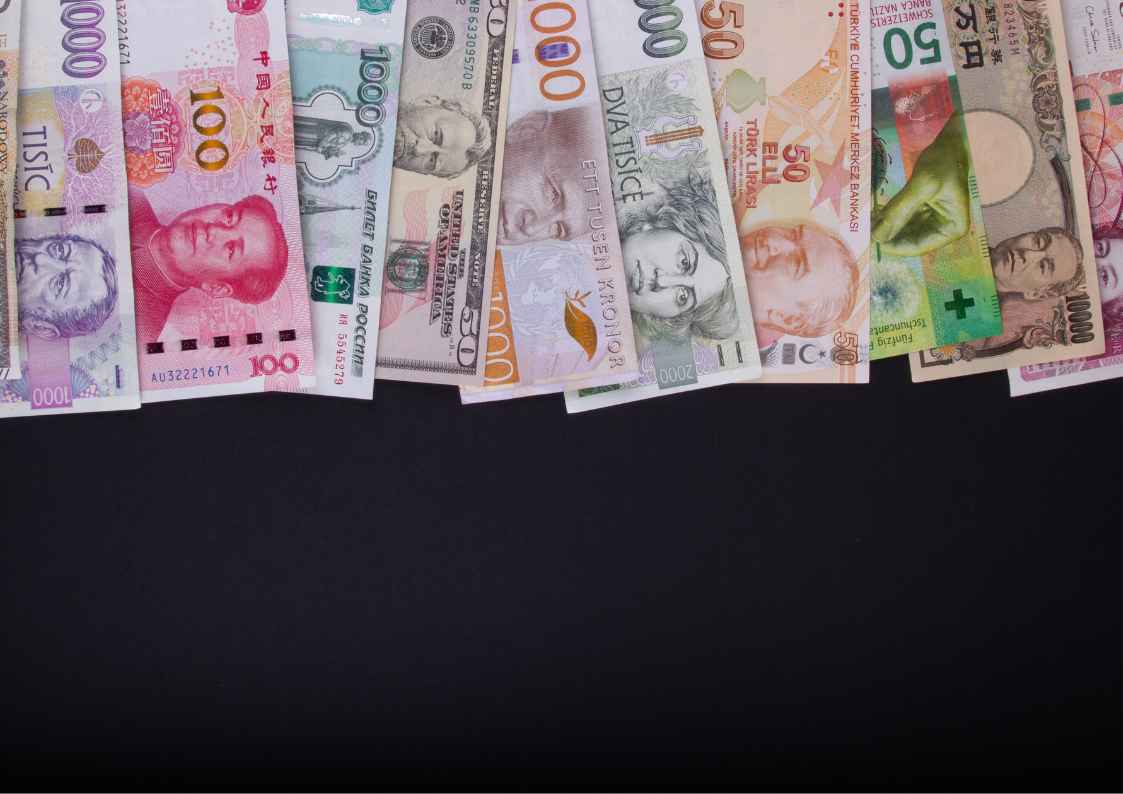Wednesday Dec 20 2023 07:06

9 min

You must be aware that the connections between the crude oil market and global currencies are essential to understand. There is an invisible string that ties the two together in a delicate dance.
Price movements in one arena often spur a corresponding reaction in the other, whether in tandem or in opposition. This correlation persists for various reasons, including how oil resources are distributed worldwide, the balance of trade between countries, and overall market sentiment.
Crude oil also substantially impacts inflation and deflation, magnifying the interdependence of these markets during periods of strong price trends in either direction.

There is an inextricable link between crude oil prices and currency values. As crude oil prices rise or fall, currencies tend to move in tandem. This is due to several factors:
Crude oil and currencies share a symbiotic relationship rooted in global economics and trader psychology. Their values are inextricably linked, for better or for worse, in a delicate dance that impacts nations, markets, and investors worldwide. Understanding these connections can provide insight into macroeconomic trends and help prudent investors hedge risks.
When crude oil prices rise substantially, it often weakens the currencies of major oil-importing nations like the U.S., Japan, China, and members of the European Union. This occurs because increasing oil prices worsen the balance of trade by raising the cost of imports.
To pay for more expensive crude, these countries must sell their currencies to buy the dollars that dominate oil transactions. This boosts the supply of their currencies relative to demand, putting downward pressure on their values.
Conversely, the currencies of major oil-exporting countries tend to strengthen when crude prices climb. Nations like Canada, Mexico, Brazil, Norway, and Russia earn more money from oil exports, increasing demand for their currencies.
At the same time, they have fewer dollars to sell from oil proceeds, limiting the supply of their currencies. These forces combine to bid up the value of oil producers’ currencies.
Of course, the impacts are not always symmetrical. Changes in crude prices affect oil importers and exporters differently depending on each country’s dependence on oil, their trade relationships, monetary policies, and other economic factors.
But as a general rule, rising crude oil prices are currency-positive for oil exporters and currency-negative for oil importers. Traders call this correlation “petrocurrency” price action, and it frequently intensifies during periods of very strong or weak crude oil prices.
Following the interplay between crude oil and currencies, and understanding petrocurrency relationships, can provide useful signals for currency trading. But as with any trading approach, oil-currency correlations do break down at times, so they should not be relied upon exclusively. Multiple confirming indicators are always best.

Several factors strengthen the correlation between crude oil and currencies:
As a globally traded commodity, crude oil prices are significantly impacted by the economic principles of supply and demand. When crude oil supplies are disrupted or threatened by geopolitical events, prices rise due to increased demand and speculation.
This often leads to a strengthening of petroleum exporting countries’ currencies as their economies benefit from the price increase. Conversely, when supplies are abundant, crude oil prices and the currencies of exporting nations typically decline.
Rising crude oil prices also drive higher inflation rates, especially in the price of gasoline and other petroleum-based products. When inflation accelerates, central banks often raise interest rates to help control it.
Higher interest rates then attract foreign capital flows into the country’s currency, causing it to strengthen. The opposite is also true: falling oil prices can lead to lower inflation and interest rates, reducing demand for the nation’s currency.
For net oil-exporting nations, crude oil sales represent a significant portion of their total exports. When oil prices rise, these countries experience trade surpluses as the value of their exports exceeds the value of their imports.
These surpluses then make the exporting nation's currency more attractive to foreign investors, driving up demand and the currency's value. Falling oil prices have the opposite effect, weakening the nation's trade balance and currency.
The correlation between crude oil and currencies is also reinforced by the psychological effects of oil price fluctuations on currency traders and speculators. Rising oil prices signal a strong global economy and higher future inflation, leading traders to buy currencies of oil-exporting nations.
When oil prices decline, traders may sell these currencies in anticipation of slower economic growth. These market expectations and reactions strengthen the relationship between oil and currencies.
As an investor or trader, you must remain cognizant of the connection between crude oil and currencies. Price movements in one market can quickly translate into price fluctuations in the other.
By staying abreast of news and events impacting either crude oil or currencies, you'll gain valuable insight into the potential direction of both.
The flow of money, the health of economies, and human emotions are all intertwined. Harnessing an understanding of these relationships can help guide your investment and trading decisions and lead to greater success in an increasingly interconnected global marketplace.
Though crude oil and currencies may seem independent, their correlation is inescapable.
Join market.com today and start trading like a pro.
“When considering “CFDs” for trading and price predictions, remember that trading CFDs involves a significant risk and could result in capital loss. Past performance is not indicative of any future results. This information is provided for informative purposes only and should not be considered investment advice.’’